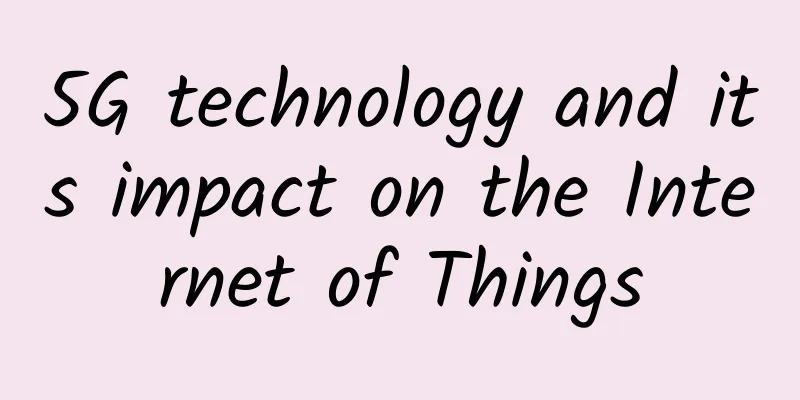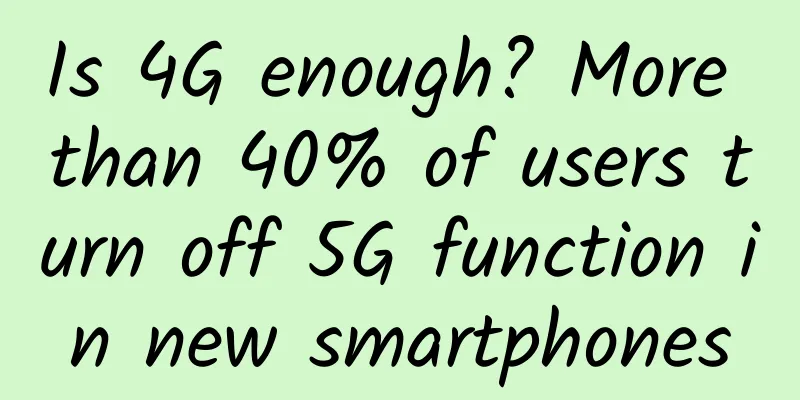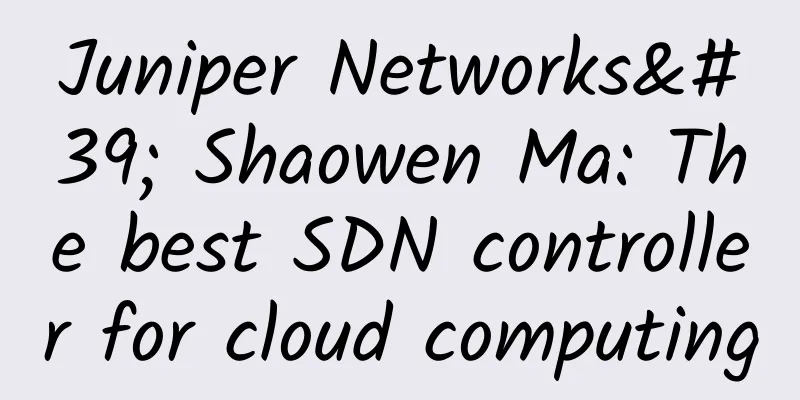5G technology and its impact on the Internet of Things

|
5G is the latest generation of cellular network technology, replacing the previous 4G LTE mobile network. 5G network provides extremely fast internet and theoretical data transfer speeds of up to 20 Gbps. Most commercial 5G service providers offer stable internet speeds of up to 1gbps for practical use. However, the use of 5G is limited to data transfer and voice calls. 5G also supports many new-age technologies such as automated machines, remote-controlled robots, self-driving cars, and most importantly, the Internet of Things. The Internet of Things (IoT) is a rapidly emerging technology field with huge potential. Mainstream adoption of 5G is accelerating innovation in IoT and enabling new use cases. What is 5G?Before we understand how 5G will impact the Internet of Things, let’s first understand the scope of possibilities that 5G brings. 5G technology is expected to be at least 100 times faster than 4G. 5G is now integrated into almost every major city and town in many countries around the world. The arrival of 5G-enabled smartphones and 5G SIM cards is changing the way people communicate and work. High-definition video calls, video conferencing, and live streaming have become the norm with 5G. 5G also offers ultra-low latency, making it effective for many technological features such as self-driving vehicles and remote-controlled machines. 5G's enhanced network capacity allows a large number of users to connect to the same network without facing a drop in speed. What is the Internet of Things?As mentioned above, IoT is an emerging technology and is still in the early stages of development. However, it already has many proven use cases in industry and other applications. In simple terms, IoT refers to devices equipped with sensors and software connected to the network. They connect via the Internet or Wi-Fi to achieve one or more functions. The simplest example of an IoT system is a ‘smart home’. Many aspects of your home, such as lights, fans, speakers, etc., can be controlled via a smartphone app or through voice commands. Automated industrial machinery and self-driving vehicles also work on the basic principles of IoT technology. The Internet of Things is slowly but surely becoming an increasingly integral part of our lifestyles. The use of 5G accelerates the innovation and adoption of IoT systems. The role of IoT in the modern worldThe applications of IoT in the modern world are extensive. agricultureIn the agricultural sector, IoT systems are used for “precision farming.” Sensors are deployed to continuously monitor different variables such as soil moisture, temperature, irrigation, nutrients, fertilizers, etc. Using data from these sensors, farmers can quickly make decisions to increase crop yields. They improve the crop planting process through insights from the compiled data. HealthcareTake a look at the healthcare industry. Wearable devices such as smart watches and patient monitoring devices can provide doctors with real-time data on patients’ vital information, such as blood pressure, heart rate, etc. Data from these IoT devices can allow doctors to detect potential diseases early and start treatment before the patient suffers any adverse health effects. Logistics and TransportationToday, IoT in logistics and transportation is deeply integrated. When ordering online, the exact location and status of the order can be tracked through the shopping app. This is achieved through IoT integration that allows real-time tracking. Using IoT systems in supply chain and inventory management also eliminates many inefficiencies and speeds up the process. manufacturingManufacturing is another industry that can use IoT. It effectively reduces costs and optimizes production processes. Using automated machines in IoT systems, these machines can communicate with each other effectively to ensure that the manufacturing process does not have any glitches. If any problems arise, these can be quickly identified and handled using data insights. Essentially, IoT creates a large ecosystem of connected networks and machines, all working together to share data, optimize processes, and ensure users have relevant data for critical decision making. Let’s take a look at how 5G technology will enhance the Internet of Things and some of the challenges of integrating 5G into the Internet of Things in the future. 5G’s Impact on the Internet of ThingsThe use of 5G technology in conjunction with IoT has already created many useful advancements and innovations. The potential for IoT growth using the full capabilities of 5G is still being explored. By leveraging the massive speed, ultra-low latency, and increased capacity of 5G networks, IoT systems and connected devices can be used in a very efficient and effective manner, thereby increasing its use cases and adoption. IoT systems have been implemented in areas such as urban planning, healthcare, manufacturing, logistics and transportation, and smart homes. Using 5G to effectively promote the use of IoT has the potential to completely transform and revolutionize industrial automation and optimize the way resources are allocated. In addition, smart home solutions are also creating a better quality of life. It brings a higher level of convenience to the modern age. At a basic level, using 5G for IoT systems will allow for faster communication between the various devices connected in an IoT network, with 5G reaching up to 1 Gbps. As a result, IoT systems and devices connected to 5G will be extremely accurate when performing time-sensitive tasks. The high speed and low latency will allow for communication and subsequent actions within milliseconds. In addition, due to the increased bandwidth of 5G, the network can support connections to a large number of IoT devices. Finally, 5G technology supports improved network coverage and highly reliable connections. It makes IoT systems immune to network outages and lags. Application of 5G in the Internet of ThingsHere are some common practical applications of 5G in IoT systems that are already being put into use around the world:
IoT 5G Enterprise Use CasesSome of the important use cases of 5G-enabled IoT systems for commercial and business purposes include:
5G's Challenges to the Internet of Things5G is still a relatively new technology. There are some limitations that should be kept in mind when incorporating it into a 5G system. Here are some challenges that may arise during this process:
SummarizeMillions of IoT systems have been deployed around the world. As 5G becomes the norm, IoT will change the way people use technology. From smart homes to automated manufacturing and autonomous driving, IoT will significantly improve quality of life. However, in order to make rapid progress, the initial costs of 5G infrastructure construction and IoT research must be borne. |
<<: Internet chat, what have you learned?
Recommend
The software-defined revolution: making SD-Branch possible
Today, software-defined networking is extending t...
Who will pay for the 5G spectrum worth hundreds of billions of dollars?
[[384899]] This article is reprinted from the WeC...
V.PS: €4.17/month KVM-1GB/20GB/1TB/Hong Kong Data Center
V.PS is a site under xTOM, providing VPS hosts ba...
Review of China Unicom in 2020: Being “down-to-earth” in the “hyper-realistic” development of 5G, and moving forward with firm “mixed reform”
As a technology that can rewrite the rules of the...
Is it necessary to activate a 5G package to use the 5G network? The Ministry of Industry and Information Technology has responded, and users are applauding
Two years ago, 5G was still far away from us; two...
The three major players in the domestic CDN market are competing against each other, and differentiation may be the key to success
With the popularization and development of the In...
PacificRack: Unlimited KVM in Los Angeles starting at $1.50 a month or $15 a year
PacificRack has launched new products. The word &...
China's 5G user numbers exceed 100 million, three major operators announce June results
[[334500]] Recently, China Mobile, China Unicom a...
DediPath: 50% off all VPS/HybridServers, starting at $1.75 per month, multiple data centers in Los Angeles/San Jose, etc.
DediPath's spring promotion is still ongoing,...
Regarding 2G network withdrawal, this article can be said to be very comprehensive
The withdrawal of 2G network is actually not a ne...
In addition to 404, what other "codes" are there for web pages?
404 Not Found When surfing the Internet, whether ...
5G: Retracing the path of 4G?
2 years, 350 million. This is the answer given af...
The latest analysis of WiFi 6E and WiFi 7 market!
WiFi has been expanding its deployment and applic...
Three-minute review! A quick overview of 5G industry development trends in September 2021
After the rapid development in 2020, 2021 is a cr...
Network virtualization market development status in 2022
Network virtualization software allows companies ...









